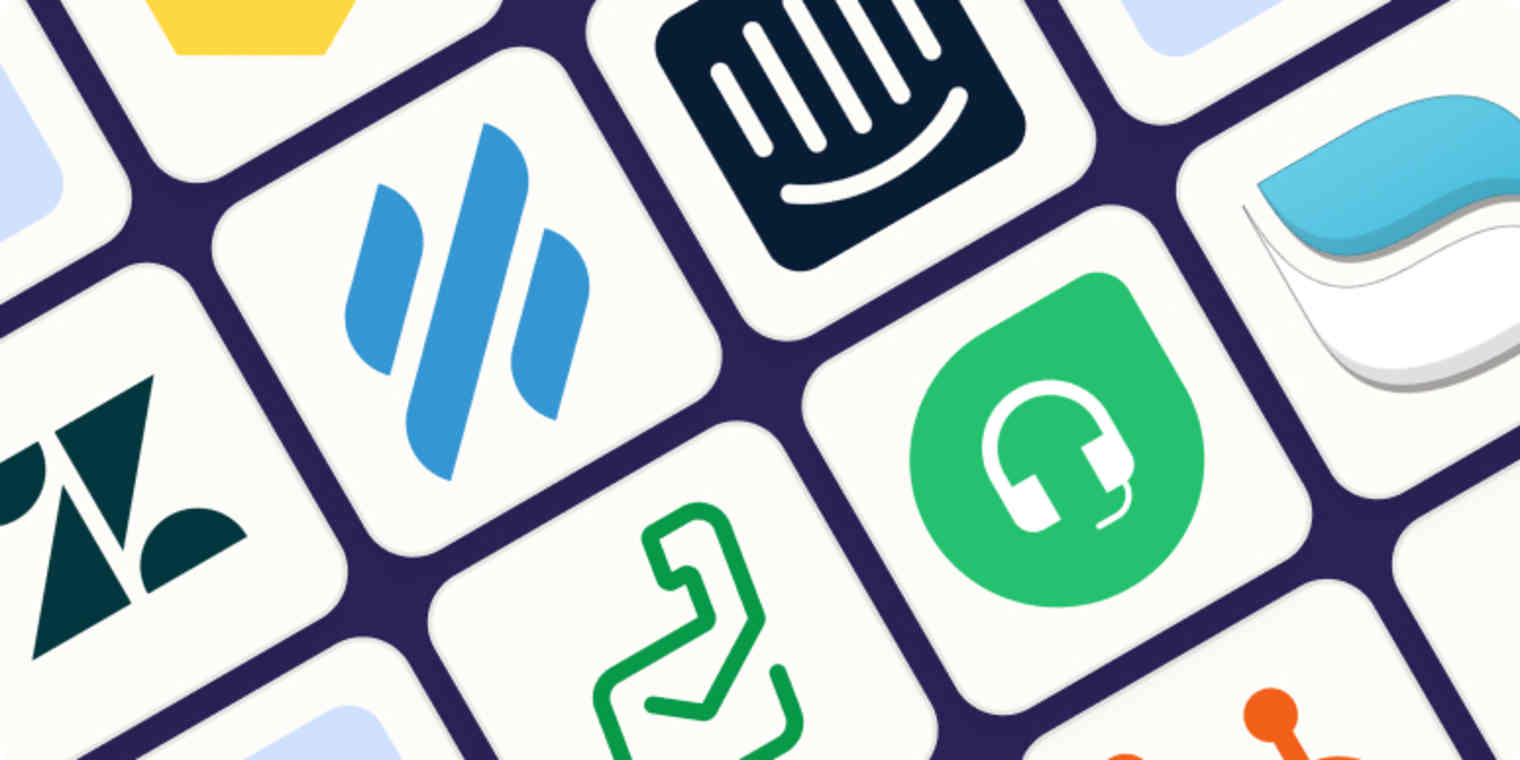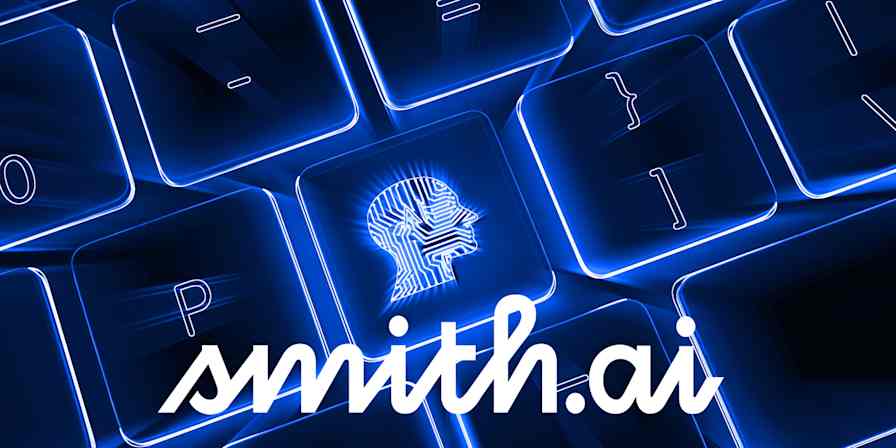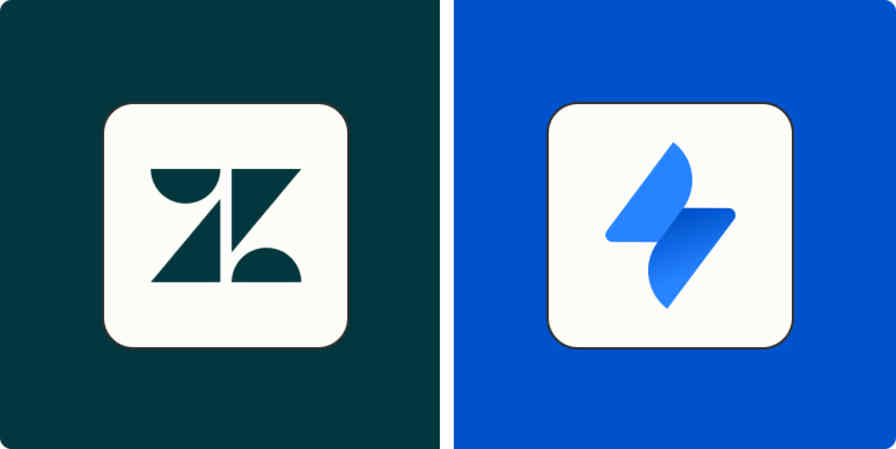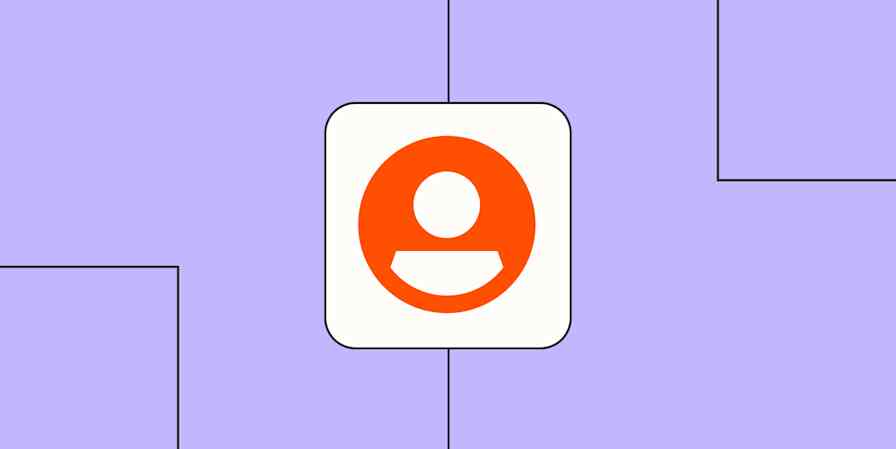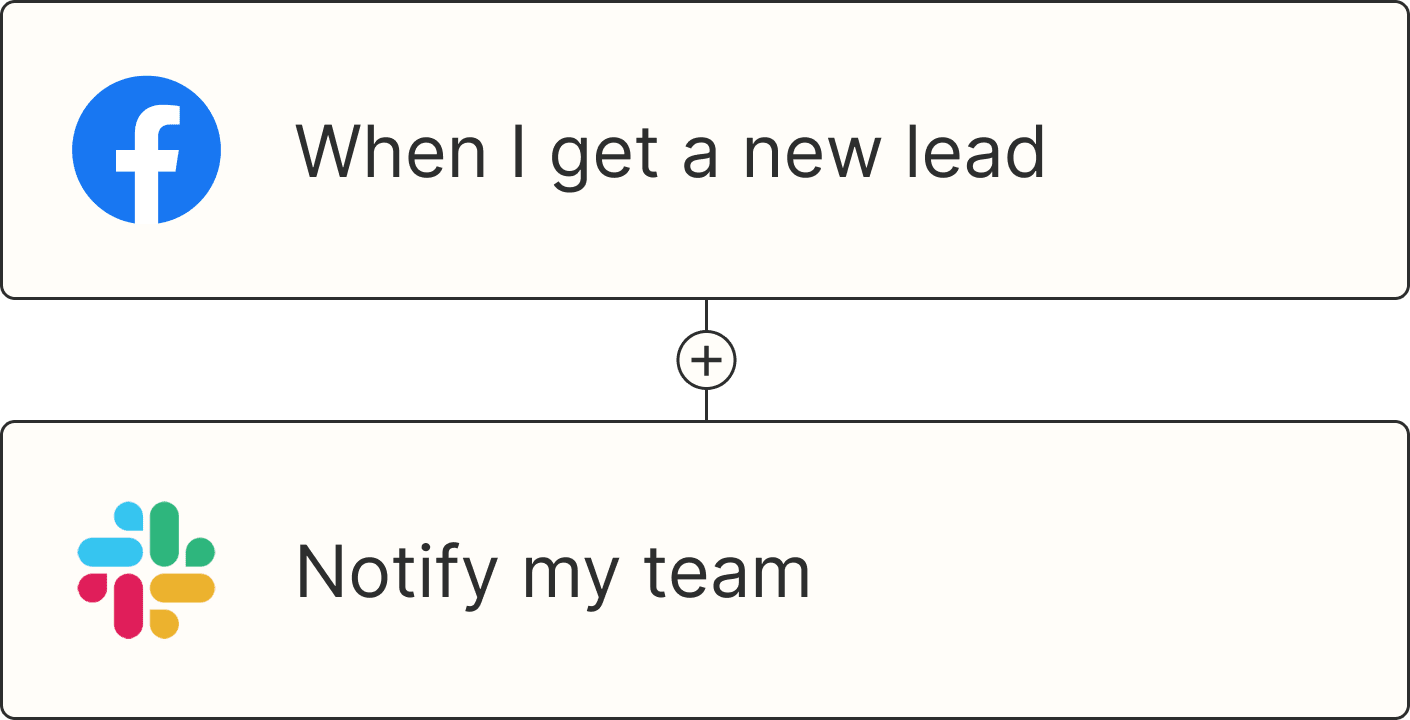I'll be frank—there are too many help desk tools out there. Many of them are practically carbon copies of one another with a fresh interface slapped on them. So if you're dealing with decision fatigue as you sort through platforms that can help your team turn a raging customer into a loyal one, you aren't alone.
I spent weeks researching and testing dozens of help desk tools to uncover the apps that are most worthy of your consideration. Here, I'll unpack the apps that shone through the noise, each in its own unique way. This is the best help desk software.
The 10 best customer service tools
Zendesk for Service for customization
Help Scout for team collaboration
Intercom for a premium AI-powered experience
Zoho Desk for AI features
Freshdesk for ticket management
Re:amaze for eCommerce companies
HubSpot Service Hub for CRM integration
Hiver for consolidated email app integration
HelpCrunch for solid automation on a budget
Salesforce Service Cloud for a full-scale sales ecosystem
What makes the best help desk software?
How we evaluate and test apps
Our best apps roundups are written by humans who've spent much of their careers using, testing, and writing about software. Unless explicitly stated, we spend dozens of hours researching and testing apps, using each app as it's intended to be used and evaluating it against the criteria we set for the category. We're never paid for placement in our articles from any app or for links to any site—we value the trust readers put in us to offer authentic evaluations of the categories and apps we review. For more details on our process, read the full rundown of how we select apps to feature on the Zapier blog.
If your customer support team is overworked, or it seems like you spend more time fielding customer complaints than improving your product or service, it's time to invest in some new tools. But you need to know what you're looking for to be sure the customer support software you choose will actually help you and not just complicate your process even more.
As I researched and tested help desk services, these are the criteria I was most focused on:
Checking off the "basics." Granted, my definition of "the basics" might be stricter than most. Every app on this list offers ticketing, a shared inbox tool, self-service features (such as a knowledge base or help center), and a live chat tool. We're living in the 2020s—while live chat may have been a "premium" feature several years ago, it's a must-have to be considered a great customer service app now.
AI integration and impact. AI is woven into almost every modern help desk tool, so merely having it isn't enough; it needs to genuinely enhance the support experience. A great help desk tool uses AI for more than just simple chatbots, adding hyper-personalization and analyzing customer history and sentiment to tailor interactions. It can also offer proactive and predictive support, anticipating needs and issues before they arise.
Automation features. There are several ways help desk software can integrate automation. On the simplest end, you'll find macros (canned replies you can save and repeatedly use) that handle common questions quickly. Moving to more advanced capabilities, there are customizable bots that can guide customers through automated workflows that trigger actions based on specific conditions, and incorporate sophisticated AI that can autonomously handle entire conversations or resolve certain issues end to end. The apps on my list all stood out with their automation features, though some shone brighter than others.
Quality of reporting and analytics. Good help desk software offers analytics and reporting features that help you identify high-level trends and optimize your processes. Great ones give you a microscope to dig into more niche, granular data and enable you to customize reports and dashboards to share with stakeholders. I ensured every app contained some type of reporting, prioritizing those with more advanced features.
Collaborative features. Collaboration tools help agents complete tickets quickly and efficiently—with each other's help. I checked each customer service tool for shared inboxes, file sharing, internal knowledge bases, and other features that help agents collaborate without butting heads.
Integrations. Your customer support tool needs to be able to talk to the other tools you use at your company. After all, the best customer service doesn't happen in a vacuum—it's connected to all the moving parts of your business.
Value for price. For all the apps featured here, the price is justifiable for the features offered and the target customer base.
These criteria—and my experience testing the apps—helped me narrow it down to 10 apps that are best for a holistic help desk experience.
The best customer support apps at a glance
| Best for | Standout feature | Pricing |
|---|---|---|---|
Customization | Advanced reporting | From $19/agent/month, billed annually | |
Collaboration | Shared inbox | From $22/user/month, billed annually | |
A premium, AI-powered experience | AI-powered inbox | From $29/user/month | |
AI tools and features | Zia, the AI-powered virtual assistant | From $14/user/month, billed annually, for the Standard plan | |
Ticket management | A unified channel interface with Freshchat | Free plan for up to 10 agents; from $15/user/month, billed annually | |
eCommerce functionalities | Client profile and historical data | From $26.10/user/month, billed annually | |
Capacity for CRM integration | Data consolidation across HubSpot products | From $9/seat/month | |
Email app integration | Integration with Gmail | From $15/user/month, billed annually | |
Affordable automation | Automated client communication | From $12/user/month, billed annually | |
Full-scale sales ecosystem integration | Complete customer 360-degree view | From $25/month/user billed annually |
Best customer service software for customization
Zendesk for Service (Web, iOS, Android)

Zendesk for Service pros:
User-friendly interface
Comprehensive reporting features
Highly customizable interface
Advanced AI capabilities
Zendesk for Service cons:
Expensive compared to other solutions on the market
Takes time to learn all it can do
Heavy features lag/take time to load
As soon as I started testing Zendesk for Service, I felt pretty confident it would make the list. And not just because it's a household name when it comes to customer service—its user-friendly interface and clear, fun tutorial process said, "I make my users' lives as easy as possible." Diving into its features only validated my hunch.
Of all its impressive features, the one that stood out to me was its advanced and granular reporting options. While Zendesk Explore took several minutes to initially load for me, once it did, I was blown away by the comprehensiveness of its reporting features. In addition to standard help desk metrics like average first response time and tickets created per day, Zendesk offers visual reports on metrics from every channel, including chatbot efficacy and how the quantity of ticket escalations has changed over time.
The platform's advanced features don't end there, though. Of all the self-service tools I tested (whether they were named knowledge bases, help desks, or something else), Zendesk's was the most customizable. I could change the look and feel with pre-built themes, added elements, and editing options. It almost felt like I was creating a blog on a website builder. And support agents can now seamlessly collaborate on resolving complex issues within the Zendesk platform through features such as real-time chat, file sharing, and task assignment.
Zendesk is designed for you to help your customers across platforms—chatbot, email, Facebook Messenger, phone, SMS, WhatsApp, and more—and it's frequently updated to support new networks. I could easily follow conversations across channels, without having to leave my browser.
Zendesk also packs in some notable AI features that really empower agents with real-time assistance and deeper insights, making your support more personalized and efficient. You'll find advanced sentiment analysis to gauge the emotional tone of tickets, predictive ticket routing that anticipates the nature and urgency of incoming support requests, and intelligent chatbots ready to assist 24/7.
I'll be honest—it's pretty expensive. But between the call center, the customizations for the knowledge base, the AI, and the reporting, the pricing is absolutely justified. And if these features still aren't enough for you, Zendesk Marketplace has over 1,700 apps to integrate with, or you can always build your own Zendesk apps.
Zendesk also integrates with Zapier, so you can do things like create new Zendesk tickets from form submissions or add new Zendesk tickets meeting certain criteria to your project management app. Discover more ways to automate Zendesk, or get started with one of the examples below.
Create a new Zendesk ticket automatically every week
Create Zendesk tickets from new Google Forms responses
Zendesk price: From $55/agent/month, billed annually, for the Suite Team plan; from $19/agent/month, billed annually, for the Support Team plan
Take a look at how Zendesk stacks up to similar apps in our showdowns: Zendesk vs. Freshdesk, Zendesk vs. Intercom, Zendesk vs. Jira, Zendesk vs. Salesforce, and Zendesk vs. Zoho Desk.
Best customer service software for team collaboration
Help Scout (Web, iOS, Android)

Help Scout pros:
Useful collaboration features
Email templating and customization
Internal knowledge base
Help Scout cons:
The updated Doc Editor feature falls short compared to the previous version
Minimal number of features compared to other solutions
Pricey for its value
Help Scout is all about easily managing email communications with customers. The service offers a variety of advanced email inbox features that make it easy to stay organized and respond quickly to customer inquiries. Create custom email templates, automatically CC or BCC multiple email addresses, set up automatic follow-ups, add a note to an email, and even set up reminders. You can also use Help Scout to track who opens your emails and when, so you can gauge the effectiveness of your communications.
I was most impressed with Help Scout's collaboration features. You can assign conversations to entire teams and even give those teams access to specific mailboxes where specific types of tickets come in. Teams can then collaborate on tickets—no more working alone. The collision detection feature visually indicates when teammates are viewing or typing in the same conversation, preventing duplicate replies. "Light users" can be added for limited access, allowing non-support team members to view conversations or add internal notes without full inbox privileges. The platform also offers an internal knowledge base (known as private collections), which agents can reference to stay on track with customer support procedures.
Help Scout integrates some handy AI functionalities that really turbocharge how you manage emails within the tool. You'll find features like AI drafts to generate initial replies based on past conversations and help articles, AI answers that give instant, transparent self-service responses straight from your knowledge base, and AI summarize to condense those long conversation threads into key bullet points. Your agents can also use AI assist to rewrite, adjust the tone, translate, or fix grammar in their replies.
If you need stellar collaboration features with a shared inbox that's clean and crisp—if minimal—Help Scout has you covered. You can also connect Help Scout to Zapier to turn tickets into tasks and share new tickets with your team wherever they spend their time, among other things. Learn more about how to automate Help Scout, or try out one of these pre-made templates below.
Create ClickUp tasks from Help Scout conversations
Create Discord channel messages for new Help Scout conversations
Create Mailchimp subscribers from Help Scout conversations
Help Scout price: From $22/user/month, billed annually, for the Standard plan
Best customer service software for a premium AI experience
Intercom (Web, iOS, Android)

Intercom pros:
Advanced inbox functionalities
Solid AI-powered features
Intuitive and easy-to-use AI chatbot customization
Comprehensive AI agent capabilities, including multimodal understanding and voice support
Intercom cons:
Some basic features are exclusive to more expensive pricing plans (multiple team inboxes, workflows for automation, workload management)
Expensive
While Intercom certainly isn't the cheapest help desk tool on the market with its custom pricing model, it's earned its place as a premium option. And its AI-first approach is evident, with AI as an integral piece of every aspect of the platform, from its comprehensive knowledge base to its customizable reporting tools.
Its inbox—an AI-infused powerhouse of user-friendly features with advanced functionalities—blows many competitors out of the water when it comes to both ease of use and advanced functionality. From one shortcut button, I could access macros, custom triggers, tags, languages (including French, German, Portuguese, and Spanish), and even emojis and GIFs. Plus, the sidebar offers all the customer and ticket details I could ask for.
Intercom has a whole suite of AI tools (mostly) under the Fin umbrella. The Fin AI Agent is an impressive piece of Intercom's offering, able to answer almost any question, regardless of language, format, or complexity. Meanwhile, Fin Vision allows it to read and understand images like screenshots or invoice uploads to help diagnose problems. Fin Voice brings that same AI intelligence to your phone support for natural, conversational interactions. You can also use Fin Guidance to train the AI to stick to your specific company policies and brand voice, and Fin Tasks to automate more complex processes, like handling refunds or scheduling appointments. Plus, with AI Inbox Translation built right in, your agents can communicate with customers in any language, all in real time within the inbox.
I found the process of creating custom bots to be really intuitive and flexible. You can add images, video clips, and more to your bot messages and create advanced paths depending on the user's actions. They can even trigger workflows with conditions and actions (both of which Intercom has a lot of).
All of these premium features, on top of a solid knowledge base, custom reports, and a large collection of integrations, make Intercom a stellar choice for your help desk software, as long as your company can afford it.
And when you connect Intercom to Zapier, you can have new users automatically populate in your CRM or email marketing lists, among thousands of other automation possibilities. Learn more about how to automate Intercom, or get started with one of these pre-built workflows.
Send new Intercom conversations as Slack channel messages
Add new rows on Google Sheets for new users on Intercom
Intercom price: From $29/seat/month, billed annually, for the Essential plan.
Best customer service software for AI features
Zoho Desk (Web, iOS, Android)

Zoho Desk pros:
Advanced generative AI capabilities
Intuitive collaboration features
Great price for value
Zoho Desk cons:
Outdated and cluttered interface
Significant learning curve
If you're looking for a more affordable solution than Intercom that still offers some "ahead-of-its-time" features, turn to Zoho Desk—Zoho's customer service solution in its cloud software suite.
While I personally found the interface to feel a bit cluttered and outdated, especially compared to solutions that could win an award for user-friendliness like Zendesk and Intercom, Zoho Desk's offerings make up for this.
Its AI features made it most deserving of a place on this list—I even felt that it beat out Intercom's. Zoho's AI-powered virtual assistant (named Zia) can intuitively generate tags for customer tickets, suggest knowledge base content that would best answer a user's question, analyze customer emotions based on their words and behaviors, and call attention to tickets with out-of-the-ordinary content.
Zia also gives conversational assistance to customers via the Answer Bot, which taps into your knowledge base and can pop up across all sorts of instant messaging channels. Zia is equally helpful for your agents, offering a Reply Assistant that suggests context-aware responses, a Content Generator that crafts tailored replies, and a Writing Assistant that refines what your agents have already written, giving linguistic recommendations for tone and style. And to really speed things up, it can even create one-click summaries of conversations, letting your agents quickly grasp the context they need.
I was also really impressed with Zoho Desk's collaboration features. My favorite was the team feed, where agents can update each other and share news and comments—it felt just like using a Slack channel. There's also an agent collision detector to prevent multiple agents from unknowingly working on the same case.
You can connect Zoho Desk to Zapier, so you can add new contacts as subscribers, send live chat conversations to Zoho Desk, and more. Here are just a few examples to get you started.
Create tickets in Zoho Desk from new submissions in Jotform
Send a direct message on Slack about new Zoho Desk tickets
Send WhatsApp Notifications messages when new Zoho Desk tickets are created
Zoho Desk price: From $14/user/month, billed annually, for the Standard plan
Best customer service software for ticket management
Freshdesk (Web, iOS, Android)

Freshdesk pros:
Advanced ticket management functionality
Freshchat feature that aggregates multiple support channels into one tool
Simple and easy knowledge base management
Robust Freddy AI for agent assistance and automation
Freshdesk cons:
Mass import and export aren't very easy
Suboptimal billing and project management functionalities
Try to use help desk software that's terrible at ticketing, and you'll really appreciate the ones that do it well. For an app with a pretty generous free plan, Freshworks' help desk software, Freshdesk, gives a lot of paid help desk programs a run for their money with its powerful ticket management features.
It really shines when it comes to ticket assignment: you can assign tickets based on an agent's skillset and workload, or just distribute tickets evenly across your team. No more taking time out of your agents' day to ask about their bandwidth before dishing out tickets. Features like advanced agent overlap prevention and a "thank you detector" further optimize workflows, preventing duplicate work and avoiding reopening solved tickets due to automatic thank you replies.
Freddy AI, Freshdesk's new AI assistant, can analyze incoming tickets, identify patterns, and automatically route them to the most appropriate agent or team for resolution. The Freddy AI Copilot offers real-time response suggestions and autocomplete, while the Freddy AI Agent delivers personalized, conversational self-service experiences for customers, even handling multi-step guided resolutions and prioritizing urgent cases, leveraging generative AI for more natural interactions that can adapt based on feedback and past interactions. It can also suggest relevant knowledge base articles or solutions to agents while they're responding to tickets. These functionalities aren't unique to Freshdesk, but they do a great job of supporting an already robust platform.
Freshdesk unifies all of its support channels (including WhatsApp, Instagram, Facebook Messenger, email, and more) via Freshchat, keeping tickets and conversations in one place. With built-in time tracking, entire teams can also track how long they spend with customers and work toward improving resolution times.
The app can also turn responses to customers into knowledge base articles, making it super easy to build a help center without manually building out a new Q&A page.
Freshdesk also integrates with Zapier, so you can connect it with your scheduling tools and any other apps you use to keep track of appointments, jobs, and technicians. Learn more about how to automate Freshdesk, or try one of these pre-built workflows.
Create Freshdesk tickets for new Jotform submissions
Add new Freshdesk users as subscribers to Mailchimp
Freshdesk price: Free plan available for 10 agents/month; from $15/agent/month for the Growth plan
Best customer service software for eCommerce companies
Re:amaze (Web, iOS, Android)

Re:amaze pros:
Client profile enrichment
Advanced eCommerce integration functionality
All-in-one social media integration
Re:amaze cons:
Outdated knowledge base editor
Subpar mobile experience (frequent app crashes)
Confusing shout box format
Email isn't always the quickest way for your customers to get their problems solved—Re:amaze (by GoDaddy) can help them get answers right inside your app. When you build your help docs in Re:amaze, you can take advantage of its drag-and-drop-style editor, and then embed your content into your website or app, right alongside Re:amaze's chat widget. Whenever a customer gets in touch, you'll see their account inside your app, with all the data on their past purchases and support tickets, so you never have to ask for extra info.
I appreciated the shared status page for agents and customers. The customer support app lets you know when there's a shortage or technical difficulty—considerate for both parties.
The platform also has some valuable team features. For motivation, there's a leaderboard view showing how well agents are doing in relation to one another. Plus, you can see when team members are viewing or replying to customer conversations, avoiding agent clashes.
On the sales side, Re:amaze gets on swimmingly with major eCommerce platforms like Shopify and WooCommerce. This means agents have all the necessary context to resolve eCommerce-specific queries quickly. It also features a chatbot and live chat option, which can be embedded directly onto your website and even on Shopify's checkout and thank you pages to help reduce cart abandonment.
To improve efficiency even further, Re:amaze offers AI capabilities like spam detection and AI writing assistance, tailored to understand product information and currency for more accurate support responses. You can also search for Shopify product variants directly from the conversation view, streamlining product-related support.
And you can connect Re:amaze to Zapier to enhance customer support across your entire tech stack. Here are a few examples to get you started.
Send Slack messages with new Reamaze conversations
Send new Reamaze messages as Discord channel messages for seamless communication
Re:amaze price: From $27.55/user/month, billed annually, for the Basic plan
Best customer service software for CRM integration
HubSpot Service Hub (Web, iOS, Android)

HubSpot Service Hub pros:
Wide range of integration possibilities
Data consolidation across multiple HubSpot products
Shared inboxes across departments
Advanced AI features integrated directly into the CRM
HubSpot Service Hub cons:
Steep learning curve
Packed with features and functionalities that can be overwhelming to new users
Expensive for its value
If you use HubSpot for anything else—sales, marketing, or operations—HubSpot Service Hub will give you a complete picture of every interaction a customer has had with your company, across all departments. You'll have an inbox shared by Support, Marketing, and Sales, which will make your customer experience feel seamless and allow you to provide personalized customer support at every touchpoint.
HubSpot has all the standard features you'd expect from a customer support app—and met all the criteria I laid out above—but it definitely took me some time to maneuver around the app comfortably. I not only had to learn how to work in the support app, but I also needed to be familiar with sales and marketing terminology. Of course, if you're already using HubSpot, this shouldn't be an issue. Service Hub is built on the HubSpot CRM platform, so if you have a working knowledge of the CRM, then you'll get the most out of it.
HubSpot incorporates all the AI functionalities that I've come to expect from these solutions (what a world we live in that I can just "expect" AI), like AI-powered chatbots and analyzing customer interactions and feedback to generate insights. But it also features a unique take on this technology through the "conversations inbox," which uses machine learning to prioritize and route incoming customer inquiries to the appropriate team. Its format, as an inbox, is a cool but complex approach, one that falls in line with its wide feature range and steeper learning curve.
HubSpot's AI extends throughout its CRM platform to empower your service team. The Customer Agent, for example, uses generative AI to handle routine tasks for you, offers personalized assistance, and can seamlessly hand off complex cases to human agents.
Then there's Breeze Copilot. What makes a Copilot different from the AI I just talked about is its deep integration with your core business data. It acts as a true partner directly within your CRM, allowing it to answer detailed questions by pulling accurate information from the entire customer history, not just a single email thread. It can even trigger "Summarize Record" workflow actions, which, frankly, are a lifesaver. Personally, I found this incredibly useful for escalating cases or communicating customer context between sales and customer success teams—instead of scrambling to recall every detail or type out a lengthy summary, it just gives it to you.
I also appreciated the real-time AI-powered duplicate detection, which quietly works in the background to maintain clean customer data for you, and AI Email Template Import to streamline how you create content for support. It's all about making your life easier and your customer interactions smoother.
Overall, Service Hub will deliver incredibly rich profiles for you—which means a better experience for your customers. And you can connect HubSpot to Zapier to automatically find, create, or update a ticket when trigger events happen in the other apps you use most. Learn more about how to automate HubSpot, or get started with one of these pre-built templates.
Create contacts in HubSpot for new leads from Google Ads
Add new HubSpot contacts to Google Ads customer lists
HubSpot Service Hub price: From $9/seat/month, billed monthly, for the Service Hub Starter plan
Best customer service software for consolidated email app integration
Hiver (Web, iOS, Android)

Hiver pros:
Unique solution in the form of an extension (lighter than apps and webpages)
Advanced integration with email apps
24/7 support via chat and email
Hiver cons:
Results in a messy and cluttered inbox
Requires a dedicated inbox for customer support so as not to overwhelm users
Automation rules have limited criteria
Hiver was certainly the most unique app I researched and tested—if you could even call it an app. Don't get me wrong—it exceeds all the criteria of great help desk software. I hesitate to call it an app because it's actually just a browser extension that integrates and merges with your Gmail account.
Nearly every browser extension I've ever downloaded has had its glitches, whether those be blank pages that require me to clear my cache or important data going *poof*. But I was thoroughly impressed with how seamlessly Hiver and Gmail came together.
With Hiver, my shared inboxes and views were located in their own category under my Gmail inboxes, a notifications inbox housing my mentions and to-dos appeared on my top bar, and I could access everything—live chat, analytics, and my knowledge base—all from my Gmail account. Everything worked great. And if something were to go wrong? Hiver offers 24/7 chat and email support to help you resolve bugs.
Hiver also weaves in AI features to streamline your customer support directly within Gmail. This means you'll find AI-powered chatbots ready for conversational support, and Hiver AI itself can jump in to help your agents with queries. If you're trying to catch up on a long email chain, Hiver AI can summarize conversations or quickly identify key information for you. Or, if you're drafting a reply, it can even help you get started with the click of a button. You can also use workflow automation features to streamline repetitive tasks like tagging emails, assigning conversations to the right agent, or sending standardized replies, further enhancing your team's efficiency.
The biggest issue I could foresee with Hiver is a very cluttered Gmail. Since shared inbox tags are all located in the same area as general Gmail tags, emails could come piling in with eight different tags, causing decision fatigue and confusion. For this reason, I feel this solution would work best for teams that can dedicate an entire inbox to customer service work, leaving all other communication to another inbox.
Hiver also integrates with Zapier, though it does gatekeep that integration for subscribers to its $49/user/month Pro plan. If you do subscribe to this plan, you can connect Hiver to Zapier to receive notifications of shared inbox activity via your favorite communication apps or automatically add customer data to your CRMs. Here are some examples.
Add Asana tasks for new emails in Hiver shared mailboxes
Get messages about new emails in Hiver shared mailboxes via Slack
Post Slack messages for new emails in Hiver shared mailboxes
Hiver price: From $19/user/month, billed annually, for the Lite plan
Best customer service software for solid automation on a budget
HelpCrunch (Web, iOS, Android)

HelpCrunch pros:
Very good price for value
Inbox automation features
Customizable chatbot templates
HelpCrunch cons:
Basic help desk features and functionalities
Lacks customization features
No drip email marketing functionalities
HelpCrunch was a pleasant surprise among low-priced help desk software options. It included everything great help desk software should, including a customizable knowledge base (with a language translation feature in the Pro plan), practical inbox features, like customizing what information shows on tickets before you open them, and reporting features (though I found these to be relatively basic).
But where HelpCrunch really stands out is its automation features. The platform enables you to create your own custom inboxes for tickets, with specific rules that automatically route specific tickets to those inboxes. For example, you can have all emails tagged "feature request" flow into an inbox dedicated to these requests, keeping your shared inboxes nice and tidy.
The platform also allows you to create auto messages that will send in different ways depending on the rules you set. For example, these can take the form of a follow-up sent to a customer or lead after a certain amount of time. These messages can include custom attributes, so they speak to individuals by name, providing a personalized experience.
HelpCrunch also offers chatbots you can customize, either using pre-existing templates or building your own flow from scratch. This can save your team time and energy by assisting customers with complaints that don't require agent intervention. HelpCrunch offers AI bot support to qualify leads and deliver instant answers 24/7. And for those times you're staring at a blank screen, needing to craft a detailed response or a new knowledge base article, there's an AI Editor built right in. It works for both your knowledge base and your inbox, speeding up your writing process and reducing that mental load on your agents.
Overall, I was impressed with HelpCrunch. That said, it almost didn't make this list because I found load times to be quite long, and I ran into some frustrating glitches like screen freezes as I tested the app's features. If these get patched (or you can overlook them), it's a great budget option with some solid and unique features.
Plus, you can connect HelpCrunch to Zapier to pull contacts from your CRM into HelpCrunch or the other way around—among many other options.
Update Google Sheets rows for new chats in HelpCrunch
HelpCrunch price: From $12/user/month, billed annually, for the Basic plan
Best customer service software for sales teams
Salesforce Service Cloud (Web, iOS, Android)

Salesforce Service Cloud pros:
Unparalleled CRM integration depth
Extensive AI capabilities for agents and customers
Comprehensive omnichannel support
Highly scalable
Salesforce Service Cloud cons:
Can be overwhelmingly complex for new users
Significant investment in time and resources for full implementation
Pricing can get very steep
Requires deep familiarity with the Salesforce ecosystem
When you're dealing with customer service at a scale that intertwines with every aspect of your business—sales, marketing, even field operations—you need a tool that lives and breathes that interconnectedness. Salesforce Service Cloud is that tool, built on the foundation of the Salesforce Customer 360 platform. If your company already runs on Salesforce, adding Service Cloud feels less like adopting a new tool and more like completing the puzzle.
What immediately struck me about Service Cloud is its sheer breadth. It's a comprehensive customer service ecosystem. The Service Console gives a 360-degree view of the customer, consolidating interactions, case history, and related data into a single, comprehensive workspace. This means you don't have to bounce between systems to understand a customer's entire journey, allowing you to deliver personalized support at every touchpoint.
Salesforce Service Cloud handles ticketing with the kind of granularity Salesforce is known for. Its omnichannel routing can direct inquiries from any channel—phone, email, social media, web chat, and even video—to the right agent based on their skills, availability, and workload. This smart assignment means you're always giving customers the most efficient and expert assistance—no more manual queue juggling. The knowledge management feature centralizes information, giving agents quick access to relevant solutions.
Then there's the AI. Salesforce's Einstein AI is deeply integrated, weaving intelligence throughout the service experience. Einstein Bots can give 24/7 conversational support and are capable of resolving cases faster and escalating only when necessary. For your agents, Einstein offers a suite of assistants: Einstein Case Classification automatically routes cases, Einstein Service Replies generate personalized responses based on real-time data from conversations and your knowledge base, and Service Assistant provides generative AI-powered step-by-step plans to streamline complex resolutions.
But let's be frank: diving into Salesforce Service Cloud is a commitment. The sheer number of features and the depth of customization mean a significant learning curve, especially if you're not already steeped in the Salesforce universe. It can feel like a labyrinth at first, but once you navigate it, the potential for seamless service across your entire sales and service lifecycle is huge.
And, of course, Salesforce Service Cloud integrates with Zapier. This means you can extend its power even further, automating workflows between Service Cloud and thousands of other applications, ensuring your customer support efforts are connected to every moving part of your business. Learn more about how to automate Salesforce, or get started with one of these templates.
Create Salesforce leads with new Gravity Forms submissions
Add new Facebook Lead Ads leads as leads in Salesforce
Salesforce Service Cloud pricing: From $25/user/month, billed annually, for the Starter Suite
Automate your help desk solution
I'm personally impressed by how far customer support apps have come—I always assumed help desk solutions would go to the same purgatory that cubicle walls ended up in. But these tools have kept up, even jumping on the AI train pretty quickly.
Help desk software can make customer service infinitely more efficient, which is good for your agents and your customer. If that software integrates with Zapier, you can automate your customer support team even further. Build your own AI chatbot, and then connect it to all the other apps you use, so your customers' inquiries can trigger events in your support software.
You can also use Zapier Agents to build your own AI agent that handles your customer support workflows. Connect all your data sources, then automate responses to common questions via email using your FAQ and knowledge base, route complex inquiries to the right team while handling routine support automatically, and track your most important support metrics—no code required. Learn more about how to use Zapier Agents, or try it out for yourself.
Related reading:
This article was originally published in December 2015 by Matthew Guay, and has also had contributions from Maria Bell, Hachem Ramki, and Michael Kern. The most recent update was in July 2025.
